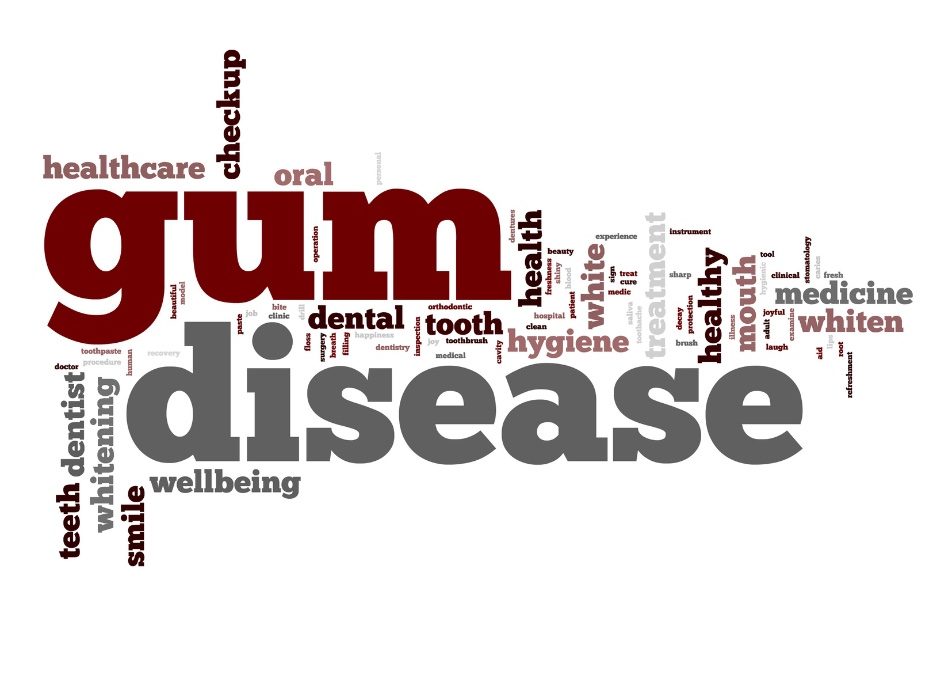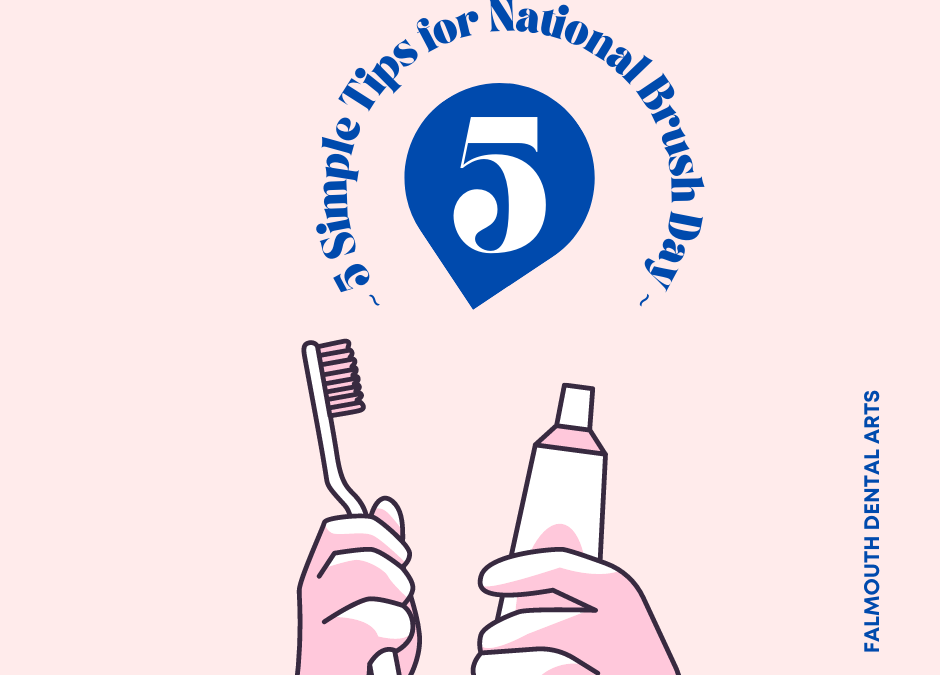
Jul 1, 2023
Summer is here! Time to go to the beach and barbecue and take a vacation! When you pack your bags for your summer getaway, don’t forget your oral health care. Here are a few oral health tips for your summer travel from your friends at FDA!
A Traveling Toothbrush
If you’re flying somewhere this summer, pack your toothbrush and floss in your carry-on bag so you have it on hand even if your luggage doesn’t make it to your final destination right away. That way, you also have the option to brush your teeth on the airplane or during layovers to freshen up. We recommend packing your toothbrush in a plastic bag so you can keep it separate from other items. Just remember to let your toothbrush air dry when you get to your vacation spot.
If you find yourself temporarily without a toothbrush, a vigorous swish with water can help clear some of the cavity-causing bacteria, or put some toothpaste on your clean finger for a quick cleaning. Then, when you are able, pop over to a store and look for the softest toothbrush you can find. If you can find a toothbrush that is ADA approved, even better! Now, how do you say toothbrush in Spanish?
Pack Some ADA-Approved Gum
Don’t worry – sugarless gum won’t take up much room in your suitcase! Research shows that chewing sugarless gum after a meal can help prevent cavities by stimulating saliva, which helps wash away cavity-causing bacteria. Look for gum that has the ADA seal of approval. Not only will it support your oral health and freshen your breath, if you’re flying, sugarless gum may also come in handy for releasing ear pressure on the airplane. Win-win!
Brush with Bottled Water
If you are camping or traveling somewhere where the water supply is not safe for drinking, use bottled water for brushing your teeth and rinsing your toothbrush. This will help prevent any unwanted illness while you’re sight-seeing!
In Case of Dental Emergencies
You can always contact our office if you have a dental emergency while traveling. Dr. Brunacini and Dr. Karagiorgos can help assess if it is a situation that requires immediate attention or can wait until you get back home. Of course, the best way to limit tooth-aches while traveling is to practice preventative care with a solid oral health routine of brushing twice a day and flossing once a day!
If you are planning a trip for later in the summer and have concerns about your oral health or are experiencing any kind of tooth pain, come and see us before you hop on an airplane. That way we can make sure any issues don’t become larger problems while you’re trying to relax and have fun.
When you get home from your travels, you may realize you let go of some of your oral hygiene routine. Don’t stress about it too much, but focus on getting back to your normal routine of brushing, flossing, and coming in for regular check ups with the FDA team. Summer is also a great time to get your kids in for their appointments! Give our office a call if you need to schedule an appointment – 207.781.5900.

Apr 2, 2023
April is Oral Cancer Awareness month and regular dental care is a first line of defense against oral cancer. Falmouth Dental Arts is committed to helping raise awareness about the importance of oral cancer screenings. According to the Oral Cancer Foundation, about 54,000 people are diagnosed with oral cancer each year in America. Smoking is the leading cause of oral cancer, but there are increasingly more and more young people developing oral cancer due to the HPV virus. The good news is that when treated early, oral cancer has a 80-90% survival rate and regular screenings assist with early detection. At FDA, Dr. Brunacini and Dr. Karagiorgos as well as our hygienists perform oral cancer screenings during your regular check-up appointments. With the goal of raising awareness, we thought it would be helpful to discuss some of the common warning signs related to oral cancer and the different types of screenings available at FDA.
Warning Signs of Oral Cancer
A good rule of thumb is to let us know if you notice any recent changes to your mouth, teeth or gums, or experience any pain or tenderness. Beyond that, there are a few warning signs linked with oral cancer to be aware of:
- White or red patches in the mouth
- Sores that fail to heal
- Abnormal lumps in the gums or neck
- Difficulty chewing or swallowing
If you discover something on your own, don’t panic. As your dental care partners, we are an essential part of your healthcare team! You can schedule an appointment with us for a prompt examination. You may wonder how Dr. Brunacini, Dr. Karagiorgos and our hygienists perform oral cancer screenings. Here is some more information on the different types of screening we perform at FDA:
Visual Oral Cancer Screening
We screen our patients for oral cancer at every hygiene appointment. Our screening methods typically include a simple visual exam of the soft tissues of the mouth. We will examine the gum tissue, lips, cheeks, and tongue. We will also palpate (gently press on) areas of the face and neck to check for any nodules or lumps. If there is an area of concern, we may offer to do a VELscope screening.
VELscope Screening
VELscope is a safe, non-invasive early detection screening device that emits a blue light that quickly allows our clinicians to identify abnormal cells before they are visible to the naked eye. The graphic below demonstrates the difference between healthy cells (Normal Epithelial Cells) and abnormal cells (Abnormal or Dysplastic Epithelial Cells), that become visible under the Blue Excitation Light.
CBCT 3D X-Ray
3D x-ray or CBCT (cone beam computed tomography) technology allows us to better visualize all of the structures within the head, neck, and mouth so that we can better assess our patients’ oral health. 3D imaging can be helpful in determining subsequent steps for the ideal treatment of a lesion.
If we have any reason for concern, the next step would be a referral to an oral surgeon for additional consultation. An oral surgeon may decide to perform a biopsy of the area for further evaluation. Most of the time, a biopsy will rule out oral cancer. However, if the biopsy is positive for precancerous or cancerous cells, additional treatment may be necessary. Throughout the evaluation and referral process, we will remain involved every step of the way to provide support and follow-up care.
If you have any questions or concerns about your oral health or the oral cancer screening process, please don’t hesitate to call us! As your dentist, we are part of your healthcare team and always happy to answer your questions!

Feb 2, 2023
February is Gum Disease Awareness month and we at FDA are here to help spread the word on how important it is to keep your gums healthy. We are always looking for ways to educate our patients about the importance of oral health and best practices, and learning more about gum disease can be a great motivator for taking better care of your gums and teeth. Here are three facts about gum disease that you may not know:
1) Almost 50% of Adults in the US Have Gum Disease
A recent report by the CDC showed that almost 50% of adults over the age of 30 have some form of gum disease. The cause is bacteria in the mouth, which infects the tissue surrounding the teeth and leads to inflammation. Warning signs of gum disease include:
- Bad breath
- Red, swollen, or bleeding gums
- Sensitive teeth
- A change in the way your teeth fit together
If you notice some of these warning signs, talk to Dr. Brunacini or Dr. Karagiorgos at your next appointment. We’ll work with you to find a home care routine and treatment plan that will support your oral health…with a focus on gum health.
2) Gum Disease is Linked to an Increase Risk in Heart Disease and Stroke
We often talk about the link between your oral health and your overall health, and this is particularly true with gum disease. Research has shown a correlation between gum disease and a whole host of health issues such as heart disease and stroke. People with gum disease are 2x as likely to have heart disease. People diagnosed with an acute ischemic stroke are more likely to have gum disease. While research is ongoing, the theory is that oral bacteria can enter the bloodstream through the gums and cause blockages and inflammation elsewhere in the body. Let us know if you have either of these health issues; we are here to be part of your health care team.
3) Gum Disease is the Leading Cause of Tooth Loss in Adults
According to the National Institute of Dental and Craniofacial Research, the most common cause of tooth loss is gum disease. While this is the result of severe gum disease, also known as periodontal disease, it is still a good reminder to pay attention to your gum health.
What is the best way to take care of your gums? Practice good oral hygiene – brush and floss every day – and come see us for regular check ups. Aside from the fact that we love seeing your smiling faces at least twice per year, it is also a great way for us to monitor the health of your gums and look for any signs of disease. Is it time for your routine hygiene appointment? Give us a call at 207.781.5900, as we’re here to help!

Feb 1, 2023
At FDA, we believe that healthy habits start early! In honor of Children’s Dental Month, we’re talking about your child’s baby teeth: what to expect, and how to care for them. Here are some frequently asked questions:
1) How Important are Baby Teeth?
Although they are eventually replaced by adult teeth, baby teeth are still very important! Not just cute, they actually help with chewing solid food, learning to talk, and they serve as placeholders for when the big teeth grow in.
2) When Will My Baby Develop Baby Teeth?
Children develop at different rates, but typically a baby will sprout his or her first tooth between 6 to 12 months of age. Usually, the two bottom front teeth pop up first, with the top two teeth following right behind. New baby teeth continue to make their appearance until about age three. Around age six, you can expect your child to get their first loose tooth!
Your baby or toddler may have lots of space between their teeth and that’s ok! This is normal and allows more space for adult teeth when it is their time to move in. For more information on new teeth timing, check out the American Dental Association’s Eruption Chart.
3) When Should My Child Start Brushing and Flossing?
Even though all baby teeth will eventually fall out, tooth decay and cavities are still possible, even at a young age. To clean your baby’s first tooth, use a wet washcloth to gently wipe the tooth and the front of the tongue. Do this after feeding your baby and again before bed.
When your baby has more than one tooth, you can start brushing them with a soft-bristled, baby toothbrush or you can use your finger. Use an ADA-approved toothpaste specifically formulated for babies or just plain water works too! Flossing isn’t necessary until two or more teeth are touching together, usually between the ages of two and three.
4) When Should My Child First Visit the Dentist?
Every child is different and we want to help them build a positive relationship with oral health and dental care. We recommend scheduling your child’s first dentist appointment between their first and their third birthday. Give us a call to determine if your child is ready for their first appointment. At this appointment, Dr. Brunacini or Dr. Karagiorgos will help them to feel comfortable with the dental chair and all of the tools we use. We will examine your child’s teeth for cavities and will also give you and your child a lesson on proper brushing technique.
If you have any questions or concerns about your child’s little pearly whites, feel free to get in touch – we’re here to help! Our team of fun and friendly dental professionals looks forward to caring for your child and helping them develop life-long healthy habits! Give us a call at 207.781.5900!

Nov 1, 2022
November 1st is National Brush Day and we’re celebrating all month by raising awareness about the importance of good tooth brushing habits. At FDA, we always love an opportunity to share our oral health care recommendations and have 5 tooth brushing tips to share with you!
1) Look for the American Dental Association’s Seal of Approval
Choose a toothbrush (and toothpaste!) that displays the American Dental Association’s (ADA) Seal of Acceptance. Both manual and electric toothbrushes can thoroughly clean your teeth and gums when done correctly; we prefer electric toothbrushes for their superior plaque-fighting powers. Make sure you select a toothbrush with extra-soft or soft bristles. For help choosing a toothbrush, ask the FDA team for a recommendation!
2) Brush Twice a Day to Keep Cavities at Bay
We recommend brushing a minimum of two times per day for at least two minutes each time. The ADA has updated its list of proper tooth brushing techniques to include the following:
- Place your toothbrush at a 45-degree angle to the gums.
- Gently move your toothbrush in a circular motion (tooth-wide) to mimic the motion of an electric toothbrush.
- Brush all outer surfaces and inner surfaces as well as the chewing surfaces of your teeth.
- To clean the inside surfaces of the front teeth, tilt the brush vertically and make several up-and-down strokes.
Feel free to ask your hygienist for a demonstration of proper brushing techniques at your next appointment. Our team of compassionate dental professionals really love educating patients!
3) Wait 30 Minutes After Acidic Food & Drinks
Brushing right after eating or drinking acidic food and drinks can damage your tooth enamel. This includes citrus foods or juices, carbonated beverages, and wine. Drink some water to rinse your mouth instead, or simply wait 30 minutes until you brush.
4) Out with the Old, In with the New
Replace your toothbrushes every three to four months, or more often if the bristles are starting to show signs of wear, such as crooked or frayed bristles. We are always happy to give you a new toothbrush at your next appointment…just ask!
5) Show Your Toothbrushes Some TLC
Rinse your toothbrush thoroughly after you use it and store it in an upright position, allowing it to air dry each time. This will reduce the growth of bacteria in between brushing sessions.





